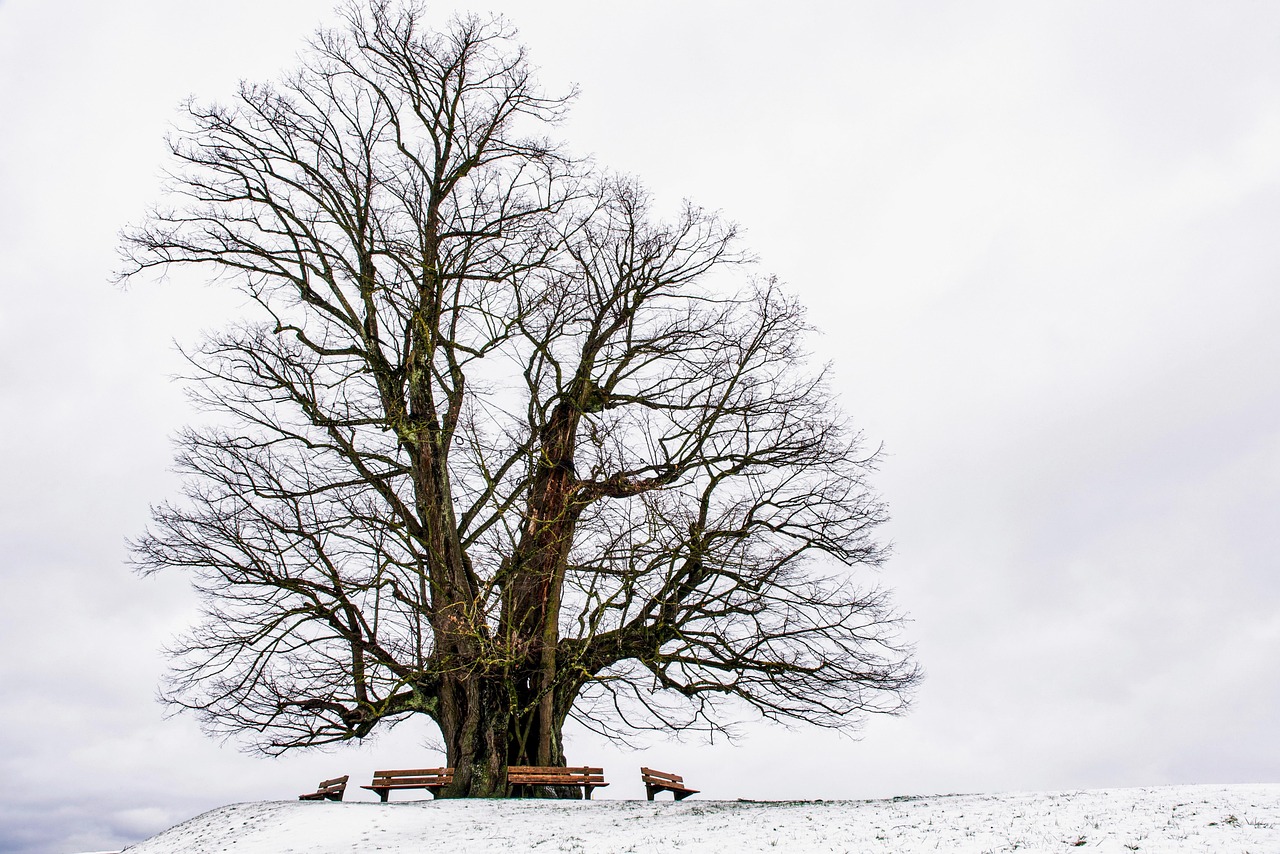The Narra tree, known for its attractive grain and durability, has a moderate growth rate of about 1 to 2 feet per year. This tree’s hardwood is highly valued for furniture and flooring applications due to its strength and aesthetic appeal.
The Narra tree, scientifically known as Pterocarpus indicus, is a tropical hardwood species native to Southeast Asia. It thrives in various environments, ranging from coastal areas to inland forests. The tree is well-regarded not only for its striking appearance but also for its robust properties, making it an ideal choice for various hardwood applications.

Narra trees typically reach maturity in about 20 to 30 years, during which they can grow to heights of up to 100 feet. The growth rate can vary depending on factors such as soil quality, climate, and care. In well-maintained conditions, these trees can produce high-quality timber suitable for numerous uses.
Growth Rate of Narra Trees
The growth rate of Narra trees is influenced by several environmental and biological factors. Understanding these can help in effective cultivation and management practices.
- Soil Quality: Narra trees prefer well-drained soils rich in organic matter. Nutrient-rich soil promotes faster growth.
- Climate: These trees thrive in tropical climates with adequate rainfall. Ideal temperatures range between 70°F and 90°F.
- Water Supply: Regular watering during dry spells aids in optimal growth. However, excessive water can lead to root rot.
- Sunlight: Full sun exposure is crucial for healthy growth. Narra trees should be planted in open areas where they can receive ample sunlight.
In addition to these factors, proper pruning and care can enhance growth rates and improve the quality of the wood produced. Early intervention in pest control and disease management also plays a significant role in maintaining the health of the tree.

Hardwood Applications of Narra
The hardwood derived from Narra trees is renowned for its durability and beauty. Due to these characteristics, it has various applications across different industries.
- Furniture Making: The rich color and fine grain of Narra wood make it an excellent choice for crafting high-end furniture pieces.
- Flooring: Narra hardwood is often used in flooring due to its resilience and ability to withstand heavy foot traffic.
- Cabinetry: Its strength and attractiveness make it a preferred material for cabinets and other storage solutions.
- Musical Instruments: The wood’s acoustic properties make it suitable for constructing musical instruments, such as guitars and pianos.
- Interior Décor: Narra wood is frequently utilized in decorative items, paneling, and moldings due to its aesthetic appeal.
The application of Narra hardwood extends beyond just functional uses; it also plays a role in cultural significance within various communities. In some regions, the wood is used to create traditional artifacts, showcasing craftsmanship and heritage.
In terms of sustainability, responsible harvesting practices are crucial. As demand for Narra wood increases, ensuring that it is sourced from sustainably managed forests becomes imperative. This approach helps maintain the ecological balance while supporting local economies reliant on forestry.

Factors Influencing Hardwood Quality
The quality of Narra hardwood can vary based on several factors during its growth cycle. Understanding these can aid manufacturers and consumers alike in selecting the best materials for their needs.
| Factor | Description |
|---|---|
| Age of Tree | Mature trees produce denser, more stable wood with fewer defects. |
| Growth Conditions | Optimal soil and climate conditions yield high-quality timber with minimal knots. |
| Cultivation Practices | Proper care, including pest management and pruning, affects wood quality significantly. |
| Harvesting Method | Sustainable harvesting ensures the longevity of tree populations and wood quality. |
The careful attention to these factors can lead to superior hardwood products that meet the high standards expected by consumers and industries alike. As interest in sustainable forestry practices grows, the future of Narra trees looks promising both environmentally and economically.
Environmental Benefits of Narra Trees
Narra trees not only provide high-quality hardwood but also offer numerous environmental benefits. Their growth contributes to biodiversity, carbon sequestration, and soil health. Understanding these advantages can further promote the importance of cultivating Narra trees sustainably.

Biodiversity Support
Narra trees play a crucial role in supporting local ecosystems. They provide habitat and food for various species, including birds, insects, and other wildlife. By planting Narra trees, we can help maintain the ecological balance in tropical forests.
- Habitat Creation: Narra trees create shelter and breeding grounds for various animals, encouraging biodiversity.
- Food Source: The flowers and leaves of Narra trees attract pollinators and herbivores, which are essential for ecosystem health.
- Forest Structure: As a tall tree species, Narra contributes to vertical stratification in forests, creating layers that support diverse flora and fauna.
Carbon Sequestration
Like many trees, Narra contributes to reducing atmospheric carbon dioxide levels through the process of photosynthesis. This ability to sequester carbon makes them valuable in the fight against climate change.
The carbon sequestration capacity of Narra trees can be influenced by their growth rate and overall health. A healthy tree absorbs more carbon dioxide, making it critical to implement sustainable practices in their cultivation.
Soil Health Improvement
Narra trees have deep root systems that help improve soil structure and fertility. Their roots prevent soil erosion and promote water retention, benefiting other plants in the vicinity.
- Erosion Control: The extensive root system of Narra helps bind the soil, reducing runoff and erosion during heavy rains.
- Nutrient Cycling: Fallen leaves from Narra trees decompose and enrich the soil with organic matter, enhancing nutrient cycling.
- Water Retention: Healthy root systems contribute to moisture retention in the soil, benefiting surrounding vegetation.
Cultivation Techniques for Optimal Growth
To maximize the growth rate and hardwood quality of Narra trees, proper cultivation techniques are essential. These methods not only improve tree health but also ensure sustainability in forest management practices.
Site Selection
The success of Narra tree cultivation begins with the right site selection. Ideal locations should have favorable environmental conditions that support healthy growth.
- Climate: Choose areas with a tropical climate that experiences warm temperatures and sufficient rainfall.
- Soil Type: Select well-drained, loamy soils rich in organic matter for optimal growth conditions.
- Sunlight Exposure: Ensure the planting site receives full sunlight for most of the day to promote photosynthesis.
Planting Practices
Effective planting practices can greatly enhance the success of Narra tree establishment. Consider the following practices:
- Seedling Quality: Use healthy, disease-free seedlings that are well-rooted and grown in appropriate nursery conditions.
- Spacing: Space trees adequately to prevent competition for light and nutrients. A spacing of 10 to 15 feet is generally recommended.
- Planting Time: Plant during the rainy season to ensure adequate moisture for seedling establishment.
Cultural Management
Cultural management practices are essential for maintaining tree health and promoting growth. Regular care can lead to better hardwood quality and increased yields.
- Weeding: Regularly remove competing weeds around young seedlings to reduce competition for resources.
- Pest Management: Monitor for pests and diseases and apply appropriate control measures promptly to protect tree health.
- Pruning: Conduct selective pruning to improve air circulation and light penetration, promoting a stronger structure and better growth.
Sustainability Practices in Narra Tree Harvesting
Sustainable harvesting methods are crucial for maintaining Narra tree populations and ensuring the longevity of this valuable resource. Implementing responsible practices can minimize environmental impact while supporting economic needs.
Selective Logging
Selective logging involves carefully choosing which trees to harvest based on specific criteria. This method helps preserve the overall ecosystem while allowing for timber production.
- Harvesting Mature Trees: Focus on harvesting only mature trees that have reached optimal size and quality.
- Avoiding Overharvesting: Implement limits on the amount of wood harvested annually to ensure sustainable population levels.
- Protecting Young Trees: Avoid damaging younger trees during logging operations to maintain future generations of Narra trees.
Reforestation Efforts
After harvesting, reforesting the area with new Narra seedlings is vital. This practice ensures the regeneration of tree populations and helps restore ecosystems.
Sustainable practices in both cultivation and harvesting contribute significantly to maintaining healthy Narra tree populations while providing valuable hardwood resources for various applications. As awareness grows about sustainable forestry practices, the demand for responsibly sourced Narra wood continues to rise.
Economic Importance of Narra Wood
Narra wood holds significant economic value across various sectors. Its unique properties make it a preferred choice for both local and international markets. Understanding the economic implications of Narra wood can highlight its role in sustainable development.
Market Demand for Narra Hardwood
The demand for Narra hardwood has been steadily increasing due to its desirable characteristics. This wood is sought after for its aesthetic appeal, durability, and versatility in applications.
- Furniture Industry: High-quality furniture made from Narra wood can command premium prices in both domestic and international markets.
- Construction Sector: Narra wood is used in high-end construction projects, particularly in flooring and cabinetry, contributing to its economic relevance.
- Artisan Crafts: Local artisans utilize Narra wood to create handcrafted items, enhancing cultural heritage while providing livelihoods.
Employment Opportunities
The cultivation, harvesting, and processing of Narra trees create numerous job opportunities. This aspect is vital for communities that rely on forestry for their economic sustenance.
- Forestry Jobs: Employment in tree planting, maintenance, and harvesting provides income to local workers.
- Manufacturing Roles: The processing of Narra wood into finished products creates jobs in sawmills and furniture manufacturing facilities.
- Artisan Work: Craftsmanship involving Narra wood supports local artisans and boosts small businesses.
Cultural Significance of Narra Trees
The Narra tree holds cultural importance in many regions where it is found. Its uses extend beyond practical applications, encompassing traditions and local practices.
Traditional Uses
Narra wood has been traditionally used by local communities for various purposes, reflecting cultural identity and heritage.
- Religious Artifacts: In some cultures, Narra wood is used to carve religious icons and ceremonial items.
- Musical Instruments: The unique tonal qualities of Narra wood make it suitable for crafting traditional musical instruments.
- Cultural Crafts: Artisans create cultural artifacts that embody the history and values of their communities using Narra wood.
Symbol of Strength and Resilience
The Narra tree is often seen as a symbol of strength and resilience within local cultures. Its ability to thrive in challenging environments resonates with the communities that depend on it.
- Cultural Festivals: Some communities celebrate the Narra tree during festivals, emphasizing its significance in their lives.
- Folklore and Traditions: Stories and folklore often feature the Narra tree, highlighting its importance in local narratives.
Sustainable Practices in the Narra Wood Industry
The future of the Narra wood industry hinges on sustainable practices that balance economic needs with environmental conservation. Implementing these practices is essential for long-term viability.
Certification Programs
Certification programs play a crucial role in promoting sustainable forestry. These programs ensure that timber is sourced responsibly, appealing to environmentally conscious consumers.
- Forest Stewardship Council (FSC): Certification from FSC indicates that the wood comes from responsibly managed forests.
- Sustainable Forestry Initiative (SFI): SFI certification promotes sustainable practices while supporting forest health and biodiversity.
Community Involvement
Engaging local communities in sustainable practices is vital for the success of the Narra wood industry. Community involvement fosters a sense of ownership and responsibility toward forest conservation.
- Education and Training: Providing education on sustainable practices helps empower local communities to manage resources effectively.
- Cooperative Efforts: Forming cooperatives allows communities to collectively manage harvesting and processing, ensuring fair distribution of benefits.
Innovative Uses of Narra Wood
Exploring innovative uses of Narra wood can expand its market potential while promoting sustainability. Research and development can lead to new applications that enhance value.
- Bamboo Composite Materials: Combining Narra wood with bamboo to create composite materials can provide eco-friendly alternatives in construction.
- Wood Pellets for Energy: Processing Narra wood into pellets offers a renewable energy source, reducing reliance on fossil fuels.
- Sustainable Packaging Solutions: Utilizing Narra wood in packaging can provide biodegradable options that reduce plastic waste.
| Innovative Use | Description |
|---|---|
| Bamboo Composite Materials | Narra wood combined with bamboo creates strong, lightweight materials for various applications. |
| Wood Pellets for Energy | Narra wood processed into pellets offers a renewable energy source, contributing to energy sustainability. |
| Sustainable Packaging Solutions | Narra wood used in packaging provides biodegradable alternatives to plastic, promoting environmental sustainability. |
The exploration of these innovative uses not only enhances the value of Narra wood but also aligns with global trends toward sustainability and environmental responsibility. The adaptability of Narra trees makes them an essential resource for both economic growth and ecological preservation.
The Role of Narra Trees in Climate Change Mitigation
Narra trees, like many other tree species, play a vital role in mitigating climate change. Their ability to absorb carbon dioxide helps reduce greenhouse gas levels in the atmosphere. As the global community increasingly focuses on sustainability, the significance of Narra trees becomes more pronounced.
Carbon Sequestration Potential
The carbon sequestration potential of Narra trees is particularly noteworthy. Mature Narra trees can store significant amounts of carbon, which contributes to climate change mitigation efforts. This characteristic makes Narra forests valuable assets in combating global warming.
- Forest Carbon Stocks: The accumulation of carbon in Narra forests can significantly impact local and global carbon budgets.
- Long-Term Storage: By promoting the growth of Narra trees, we can enhance long-term carbon storage solutions that benefit future generations.
- Restoration Projects: Incorporating Narra trees in reforestation and afforestation projects can amplify climate action initiatives.
Community Engagement in Climate Initiatives
Engaging local communities in climate initiatives centered around Narra trees can elevate awareness and foster stewardship. Communities that understand the ecological benefits of Narra trees are more likely to participate in conservation efforts.
- Educational Programs: Implementing educational programs that highlight the importance of Narra trees can empower communities to take action.
- Community Forest Management: Involving local populations in the management of Narra forests ensures that conservation practices align with their needs and traditional knowledge.
- Promoting Eco-Tourism: Eco-tourism centered around Narra forests can provide economic incentives while promoting conservation efforts.
Future Prospects for Narra Tree Cultivation
The future prospects for Narra tree cultivation are promising, especially with the growing emphasis on sustainable practices and eco-friendly products. As demand for high-quality hardwood continues to rise, there are several avenues for growth and development.
Research and Development
Investing in research and development can lead to improved cultivation techniques, pest management strategies, and better understanding of growth patterns. Innovations in these areas can further enhance the economic viability of Narra trees.
- Genetic Research: Exploring genetic variations can help identify tree strains with faster growth rates and superior wood quality.
- Pest Resistance Studies: Researching pest resistance can lead to sustainable methods for protecting Narra trees from infestations without harmful chemicals.
- Climate Adaptation Research: Understanding how Narra trees respond to climate change will aid in developing resilient cultivation strategies.
Market Expansion Opportunities
As awareness of sustainable materials grows, there are significant opportunities for expanding the market for Narra wood. Companies that prioritize eco-friendly sourcing may find a receptive audience among consumers seeking sustainable options.
- Global Trade: Expanding into international markets can increase demand for Narra wood products, benefiting local economies.
- Product Diversification: Developing new products, such as eco-friendly packaging and renewable energy solutions, can open additional revenue streams.
- Sustainable Branding: Companies that brand themselves as sustainable can attract environmentally conscious consumers, enhancing market presence.
Final Thoughts
The Narra tree represents a unique intersection of environmental sustainability, economic opportunity, and cultural significance. Its moderate growth rate and high-quality hardwood make it a valuable resource across multiple applications. The ongoing focus on sustainable practices ensures that Narra trees can continue to thrive while supporting local communities and ecosystems.
The environmental benefits of Narra trees extend beyond timber production. Their role in carbon sequestration and habitat creation underscores their importance in climate change mitigation strategies. As we look to the future, investing in research, community engagement, and sustainable practices will be critical to maximizing the potential of Narra trees.
By fostering a deeper understanding of the value of Narra wood and promoting responsible management practices, we can ensure that this remarkable tree species contributes positively to both economic growth and environmental preservation for generations to come.
